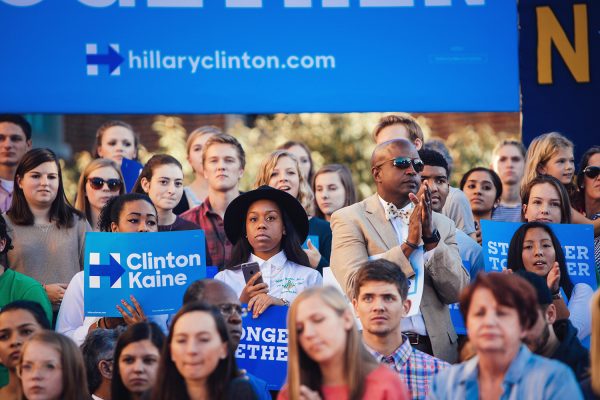
Up until now, I think rumors of a Democratic civil war have been exaggerated. Democrats have wisely nominated center-left candidates, like Ralph Northam, in Republican-leaning territory, such as Virginia, and progressive candidates, like Alexandria Ocasio-Cortez, in safe Democratic districts, for example in New York.
But as Democrats will need to coalesce around a single candidate for the 2020 presidential election next, the battle between the center and left could burst out into the open.
Midterms vindicate both sides
Both sides can find arguments in the outcome of Tuesday’s midterm elections.
- Candidates like Andrew Gillum in Florida and Beto O’Rourke in Texas raised Democratic turnout by appealing to young, female and minority voters.
- But they didn’t win.
- Most of the Democratic gains in the House of Representatives came in suburban districts Mitt Romney won in 2012 and Hillary Clinton won in 2016.
- The industrial states that put Donald Trump over the top in 2016 — Michigan, Pennsylvania, Wisconsin — largely switched back to the Democrats.
What is the fight about?
The differences must not be overstated. As David Leonhardt has argued in The New York Times, supposedly “centrist” and “leftist” candidates have a lot in common. Debates over Barack Obama-style incrementalism versus Bernie Sanders-style purism, over the wisdom of talking about impeachment, over whether to woo or write off the white working class, are more intense among people who write and tweet about politics than among Democratic candidates.
Democratic candidates aren’t obsessed with President Trump and they aren’t giving up on the white working class as irredeemably racist. They are running pocketbook campaigns that blast Republicans for trying to take health insurance from the middle class while bestowing tax cuts on the rich (charges that have the benefit of being true).
John F. Harris similarly argues in Politico that the dispute on issues like health care and income policy is really over how fast to move and how far to go.
The differences, in one analysis, are stylistic, and so it is easy to imagine that they will be worked out over the next year as the party settles on another presidential nominee.
Or not. There are many on the left who feel the party needs to break with “neoliberalism” and try genuine social democracy (or “democratic socialism”). And on foreign policy and trade, there are real differences.
Do Democrats even need unity?
Political scientists Matt Grossmann and David A. Hopkins argue in Asymmetric Politics (my review of their book here) that whereas Republicans are a “normal” ideological party, Democrats are better understood as a coalition of interest groups.
Asking Democrats to come up with a unified program is treating them like Republicans. They’re not. Which is why, despite the last two or three decades of polarization, there is still room in the Democratic Party for social conservatives like Joe Manchin as well as self-described socialists like Sanders.
On the other hand, the lesson from social democrats in Europe is that you can’t be all things to all people. Clinton tried that in 2016 and failed. Social democrats in Germany and the Netherlands tried that and they got clobbered.
Social democrats in Denmark and Sweden have taken a harder line on borders, crime and defense in an attempt to win back working-class voters. Their counterparts in Portugal and Spain have made deals with the far left to oust the center-right. Both strategies are working. Voters respect and reward parties that stand for something.
My view
I believe targeting college graduates in the suburbs is the better strategy for Democrats. I worry that appeasing Trump voters would mean deemphasizing social issues, like immigration and transgender rights, which is both wrong on principle and not worth the tradeoff when it depresses Democratic turnout.
But I admit that’s also because I want it to be the better strategy.
With the Republican Party veering so far to the right, I’m desperate for a party that takes liberal (in the old-fashioned, European sense of the worse) positions on the economy and social policy. I’m for free markets, free trade and internationalism and I don’t want the government interfering in people’s personal lives. I once thought Republicans agreed. Now it seems more fruitful for the center-right to ally with Democrats.
